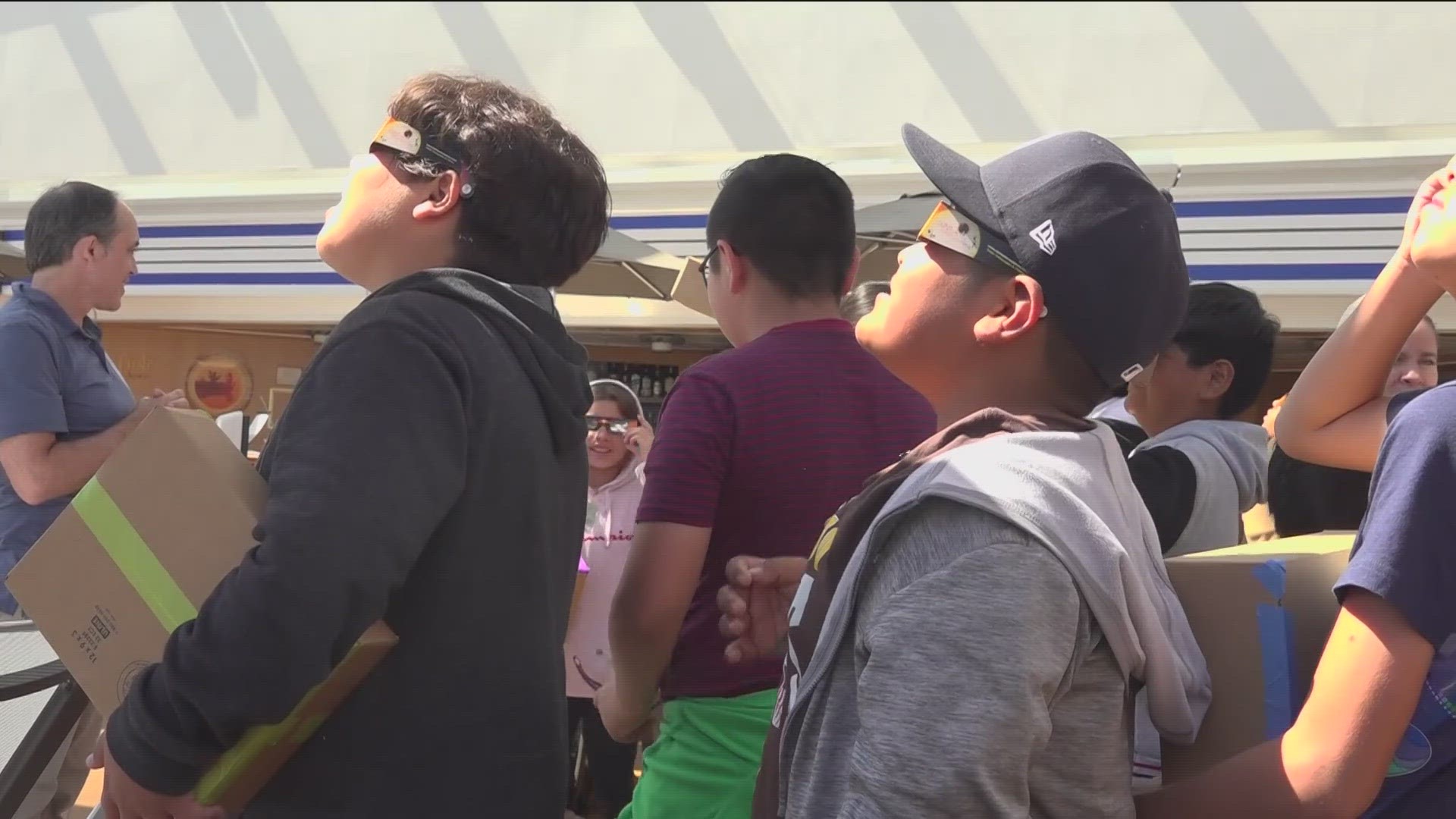SAN DIEGO — A few spectacular eclipse events are happening in the next six months and while San Diego is not in the direct path, scientists said it will be worth taking a look.
The total eclipse is not happening until April 2024 but the annular eclipse is happening on October 14.
Local sixth-grade students from Perkins Elementary School in Barrio Logan went aboard Holland America’s Volendam cruise ship to get a glimpse of what the eclipse could look like.
While the students won't be on the Koningsdam or Zaandam ships when it sets sail to be in the path of totality for the total eclipse in April, 2024, they learned it will still be worth taking a look, especially when San Diegans can view the annular eclipse on October 14, starting at 8:47 am.
“Here in San Diego, even though we are not on that strip of land, we can still see the sun partially blocked. Seventy-five percent blocked by the moon and that will be an oppressive event,” said Adam Burgasser, PhD, UC San Diego professor of Astronomy and Astrophysics.
Before the students went to the deck, Burgasser taught the students how to safely view the sun using eclipse glasses, a pinhole projector, or a telescope with solar filters.
“You don't ever want to stare into an eclipse,” said Burgasser.
The kids were given eclipse glasses and materials to build their own pinhole projector.
“We are going to be looking through one hole while the sun comes through another hole,” said Burgasser.
Sixth grader Diego Alvarado says he is fascinated with space.
“The planets and also I like to learn about Saturn,” said Alvarado.
When the students entered the deck they put on the eclipse glasses and gasped how orange the sun looked through the lens.
They put their back to the sun and tested out their pinhole projector and were mesmerized by how tiny the sun looked through the box.
Burgasser said eclipses also give scientists an important opportunity to study the sun's atmosphere.
“When it happens naturally with the moon we can study that coronal gas, very easily and get some interesting science from that particular very rare part of the sun,” said the professor.
That little ball of light may be small from the pinhole projector, but this experience made a big impact on the students.
“It’s like you put the sun in a box and own the sun for yourself,” said Burgasser.
NASA says on Oct. 14, 2023, an annular solar eclipse will cross North, Central, and South America. Visible in parts of the United States, Mexico, and many countries in South and Central America, millions of people in the Western Hemisphere can experience this eclipse.
On April 8, 2024, a total solar eclipse will cross North America, passing over Mexico, the United States, and Canada. A total solar eclipse happens when the Moon passes between the Sun and Earth, completely blocking the face of the Sun. The sky will darken as if it were dawn or dusk.
WATCH RELATED: Total lunar eclipse coming to the skies above San Diego

